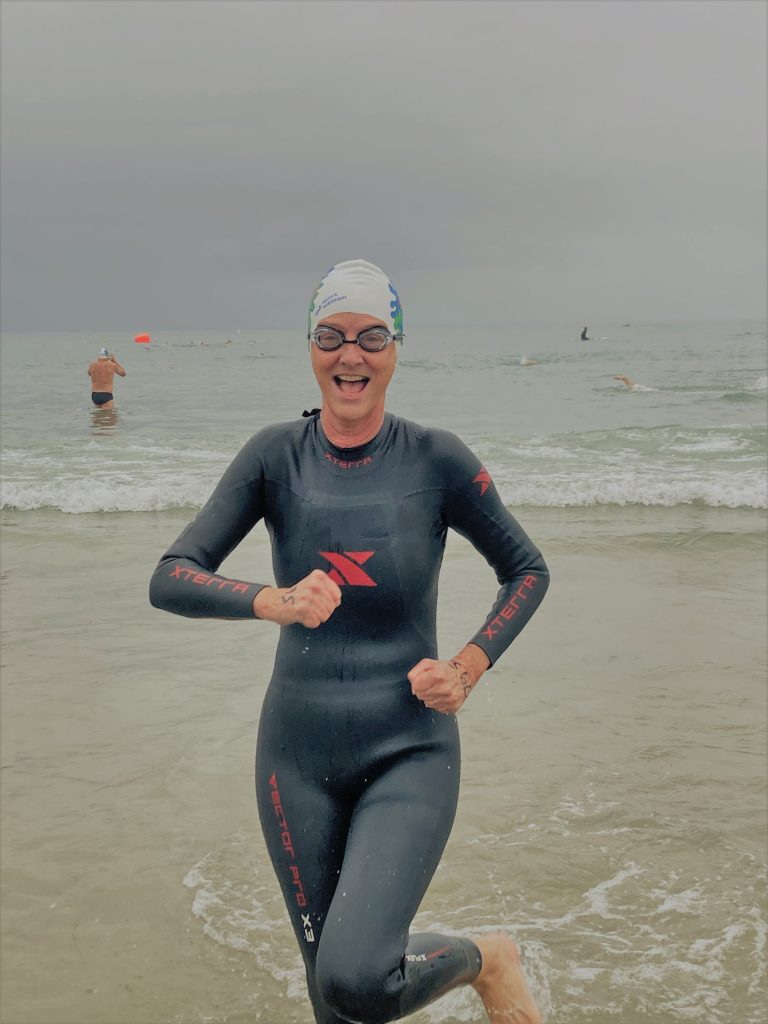

Sixty years ago, at age three, I jumped in my neighbor’s swimming pool and have never really dried off. I took to water instantly, feeling at home there, and have spent much of my life immersed in it. While I love pools, my happiest hours of being all wet have been spent in open bodies of water like lakes, bays, and oceans. I suspect every human has a deep affinity like this for some specific part of the natural world, whether it be the mountains, the desert, the forest… What it is for you?
For me, this early encounter with water wasn’t just about discovering my happy place. I also discovered my athletic niche there. Very active as a child, I loved to play games but discovered I lacked good hand-eye coordination. Add a ball or put a racket, bat, or club in my hand and frustration was not far off. Despite the ardent hopes and concerted efforts of my parents to make me into a tennis player—after all, I would make the needed fourth for a family game of doubles—it was not meant to be.

But I quickly discovered I had a knack for swimming, and I fell in love with it. So, while the rest of my family was on the court, I was in the pool. In the picture above, I’m five years old and have just completed my first ever race. (That’s me in the dark blue swimsuit, elbows on my knees, facing the camera.) The official age category I competed in was “10 and Under”, and because I was way under, you probably won’t be surprised to learn that I came in last—dead last, by several minutes. But I was elated because I’d proven to the coach and my parents, none of whom believed it possible, that I could finish a whole lap.

Fast forward 59 years and you get the picture on the left. That’s me, last September, coming out of the ocean having completed my first leg of a 10-mile relay. Yup, I’m still at it. Still swimming, still loving it, still racing. But with a very different orientation now. Compare and contrast the looks on my face in these two pictures for a glimpse into the change. I know it’s hard to tell because of the picture quality, but in the early one, I’m wearing a look of smugness. Odd on someone so young, don’t you think? In last year’s, there’s a look of joy. Yes, I’m hamming for the camera, but that’s because I’m having a really good time.
During the decades between these two photos, striving dominated my approach to swimming, and I competed throughout them, on teams and individually. I learned well how to push my body, which can be phenomenally good for one’s health and fitness, and had some triumphant moments. However, I also had some intensely negative moments, like when I’d push despite pain or to the point of injuring myself—one time, catastrophically (see Growing into the Gray.) You see, underneath my orientation to swimming—as to so much of life—lay an unconscious need to prove my worth and value, stemming from childhood wounding I hadn’t dealt with.
Thanks to somatic trauma therapy, I no longer swim to prove anything to anyone, myself included. I am present in the moment, fully embodied, and swim for the pure animal pleasure of it—the sensuous delights of the water sliding over my body as I slice through it, cradling me in its buoyancy like a lover, the steady rhythm of my breathing and heartbeat echoing in my ears letting me know I’m alive and well and powerful. My stroke is so much gentler now, not forced. Push is gone, but, ironically, I’m as strong and capable at sixty-three as I’ve ever been, without trying to be. Hmm, a powerful lesson for all of life, perhaps?
Because of my natural affinity for the water, friends tease me that I must have been a dolphin in an earlier incarnation. I’m thinking that’s not so far-fetched, even though in my mind the jury’s still out on the whole past life thing. What I think it comes down to is this: dolphins are famous for their playfulness. And because I have finally embodied safety, and thus feel free to be me, I bring that sense to my time in the water now. Swimming has become an arena of deep play for me. And it shows.
[Possible resources for further exploration: Blue Mind: The Surprising Science That Shows How Being Near, In, On, or Under Water Can Make You Happier, Healthier, More Connected, and Better at What You Do by Wallace J. Nichols; Deep Play by Diane Ackerman; and www.totalimmersion.net.]